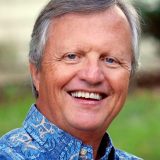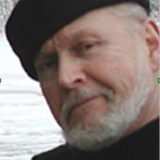 It is our ability to emote, and therefore communicate a sense of individuality, that largely defines us as human. Anyone that cannot share warmth or feeling, or whom blindly and unthinkingly follows a group, is seen as “robotic” and “cold”, an unfeeling, inhuman “machine.” Hardly a stale topic for storytelling, these themes remain a frequent and favorite topic of exploration within modern media. One newer assessment of human nature, Equals, is a brand new film that brings to mind some thematic overlap from Aldous Huxley’s Brave New World – the first masterful critique of mass production and a loss of personal identity.
It is our ability to emote, and therefore communicate a sense of individuality, that largely defines us as human. Anyone that cannot share warmth or feeling, or whom blindly and unthinkingly follows a group, is seen as “robotic” and “cold”, an unfeeling, inhuman “machine.” Hardly a stale topic for storytelling, these themes remain a frequent and favorite topic of exploration within modern media. One newer assessment of human nature, Equals, is a brand new film that brings to mind some thematic overlap from Aldous Huxley’s Brave New World – the first masterful critique of mass production and a loss of personal identity.
Equals is set within a “dystopia” of the far future, where civilization regards showing emotion as a disease: calling it “Switched on Syndrome.” The film focuses on two youths, Silas and Nia, as they meet each other within a facility intended to cure, or destroy, SOS victims. While coping with their condition, the two main characters are given the opportunity to flee to a realm untainted by the oppression and rigidity they’ve known. Produced via a collaboration between art-house cinema company A24 and DirecTV, Equals attempts to commingle elements of Shakespeare with larger sci-fi and philosophy questions regarding our capacity for passion and moral choice.
 Brave New World takes place in a world of sleep-induced education, chemical control and a government-dictated program of human development inspired by Ford’s assembly line. The book centers on characters Lenina and Bertram, professionals affiliated with the development of future humans. In the novel the two take a vacation to Malpais, a reservation for indigenous New Mexicans. Bertram recognizes one of these “savages” as being the illegitimate child of his department’s director and decides to bring “John” back to London, resulting in a great deal of meditation between Lenina and John on the nature of humanity.
Brave New World takes place in a world of sleep-induced education, chemical control and a government-dictated program of human development inspired by Ford’s assembly line. The book centers on characters Lenina and Bertram, professionals affiliated with the development of future humans. In the novel the two take a vacation to Malpais, a reservation for indigenous New Mexicans. Bertram recognizes one of these “savages” as being the illegitimate child of his department’s director and decides to bring “John” back to London, resulting in a great deal of meditation between Lenina and John on the nature of humanity.
There are multiple similarities in these two stories in regard to controlling human nature and our emotions. Both settings involve centralized, uncontested governments that exhibit staggering degrees of control over their people and are ardently dedicated to suppressing dissenting thought. Emotions, and the hormonal shifts involved, are seen as the strongest factor in causing societal disruption and collapse. When people are denied emotional release, they lose their humanity. When humanity is lost, so goes the need to express one’s individual nature.
As “the devil is (often) in the details,” the two media’s approaches to societal control and emotional suppression show some variation. While the world of Equals regards the ability to show emotion as a disease, those exhibiting “SOS” may actually be manifesting a defense against the suppression instilled by the central government. Brave New World‘s central government tackles emotion and critique from the start of humanity through its controlled breeding programs and sleep-delivered education. Any compulsion to “feel” is relegated to strictly tactile sensations and consumption of the hallucinogenic substance known as “soma.” Lastly, Brave New World‘s populace is conditioned to stay with others, rather than spend time alone or without a dedicated partner for a traditional relationship.
The visions of humanity put forth in these stories are not isolated to fiction and thought exercises. The enforced consumer society and production of “soma”-like pharmaceuticals within Brave New World, and the emotional detachment seen in Equals are characteristics of present-day society. Furthermore, the constant fear-mongering that has grown out of the 24 hour cable news cycle has greatly raised distrust and only helped to further divide society into various tribal groups unified by their political affiliations.
Stories produced as critical satire defy the notion that “this is just fiction”, as one looks around at the world we live in and comes to understand that we’re cogs in a larger machine; one which has been preset long before our arrival.










